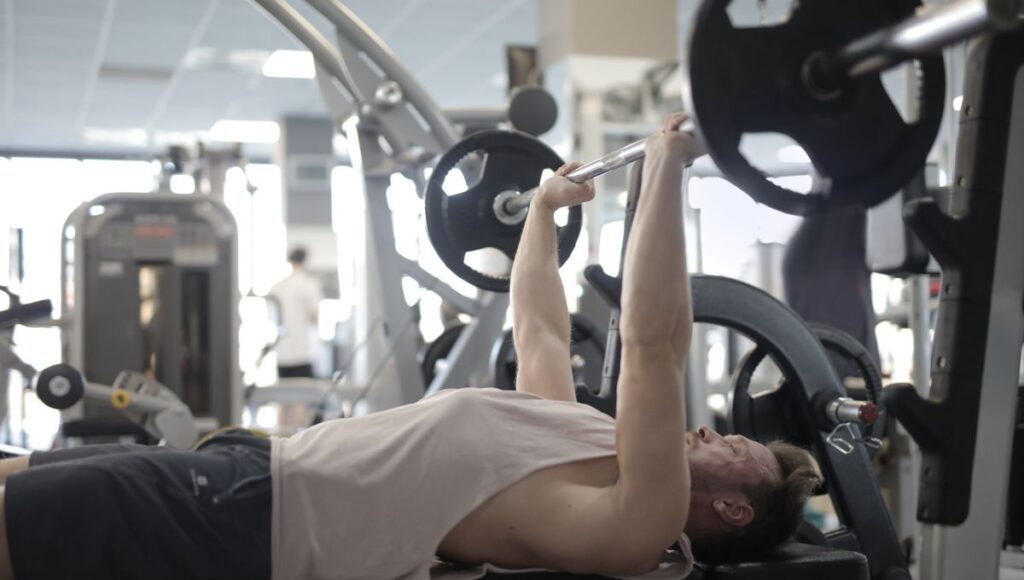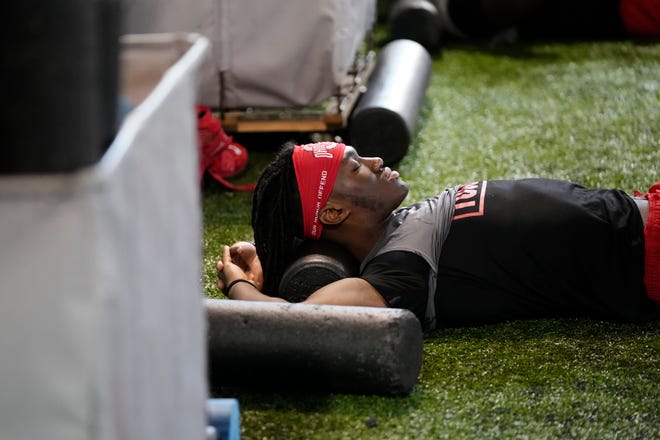The game was already well in hand when it happened, but there was still injury to be added to insult. Stephen Curry, who had suffered a foot injury just plays earlier, attempted to defend Marcus Smart on a drive with just over two minutes remaining. Smart, a 6-foot-4, 220-pound amalgamation of muscle, grit and determination, delivered a compact elbow to Curry’s midsection, causing the two-time MVP to limp painfully to the bench as he checked out for the final time.
Resignation? Perhaps not. But surely acquiescence … at least for one night.
The Boston Celtics took a 2-1 lead in the NBA finals on Wednesday with a 116-100 Game 3 win, and it’s not one that the Golden State Warriors will soon forget. They’ll have plenty of time to think about it while soaking in the ice tub and getting full-body massages, trying to prevent bruising and inflammation from the punishment the Celtics relentlessly delivered throughout the evening.
“Game 2, they brought the heat to us. For us, that left a bad taste in our mouth because what we hang our hat on is effort on the defensive end and being a physical team. It definitely woke us up a little bit,” Smart said after the Game 3 win. ” We just wanted to come out, and if we were going to come out here and play, the last thing when we left that court we didn’t want to say we weren’t physical enough.”
Boston executed on its clear intention of getting to the rim early and often, outscoring the Warriors 52-26 in the paint for the game. The Celtics also displayed their force on the offensive glass, edging the Warriors 15-6, which led to a 22-11 advantage in second-chance points.
A trademark Curry heater made things close in the third quarter, but the Celtics quickly answered to put things out of reach in the fourth. More than anything, the Celtics just beat the Warriors up. It makes you wonder how Golden State, whose key players are in their 30s, will hold up if the series continues against a mostly young, athletic Celtics team that, as Smart said, takes pride in its physicality.
Jayson Tatum didn’t have the best shooting night on Wednesday, but once Curry got into foul trouble, he used his size and strength advantage to get to the basket with little to no resistance.
Curry wasn’t the only one to take the brunt of the Celtics’ brawn. Al Horford nearly sent Otto Porter Jr. into the stands with this shoulder bump in the first quarter.
In one of the biggest momentum plays of the game, Jaylen Brown — who was brilliant offensively — came up with a tremendous defensive stop on Klay Thompson. First, Brown beat Thompson to the spot and bodied him up, forcing him to change directions and nearly poking the ball away in the process. Then Brown recovered and used his length to cut off the pass to the corner. Finally, Brown stayed connected as he trailed Thompson on the cut through the lane, then used his athleticism and timing to erase the shot at the rim. Truly remarkable stuff.
When it comes to offensive rebounding, sometimes teams can get inflated numbers due to long caroms off of 3-pointers or random bounces here or there. But the Celtics earned the bulk of their offensive rebounds through determination and strength. Watch here as Horford establishes position, then outworks THREE surrounding Warriors to secure the rebound. He misses the put-back, but it’s indicative of the type of effort and physicality the Celtics played with all night.
“I thought the offensive rebounds were just a killer. … That was really the difference in the game,” Warriors coach Kerr said. “We made several stops, especially in the second half where we had a chance to cut into the lead or make a little push, and they got offensive boards. Those were tough.”
Overall, it just seemed like the Warriors were being sent to the floor more in Game 3. Nothing was easy, and the Celtics’ size advantage was never more prevalent. Robert Williams III had four blocks and three steals — and it seemed like a whole lot more. His length and leaping ability turned even the most cautious of floaters into kindling for his incendiary rejections.
“We’ve talked about just being aware of where he is because especially depending on who he’s guarding, he can kind of come out of nowhere,” Curry said of Williams after Game 3. “There’s a play early in the fourth, I got by Grant Williams and thought I had daylight to get a shot up, and you underestimate how athletic [Robert Williams III] was and how much he could bother that shot.”
In case you’re wondering what play Curry’s referring to, here it is. Williams doesn’t even come into the frame until the last second, and suddenly the ball is on its way to the stands at the speed of a Shohei Ohtani fastball.
We knew the Warriors were at a size, length and athleticism disadvantage heading into the series, but the ramifications were truly apparent in Game 3. Boston found success going small to close its Game 1 win, and then went to big, bruising lineups down the stretch on Wednesday. The Warriors’ only true answer for size is Kevon Looney, who only played 17 minutes in Game 3 after averaging 23 minutes over the first two games.
If the Warriors go big, they sacrifice shooting and spacing on the offensive end. If they go small, they run the risk of what happened on Wednesday: getting buried on the glass and dominated in the paint. It’s a conundrum, and one that Kerr and his staff will have to contemplate carefully as the series progresses.
“That’s the game for us. We have to factor in what’s happening on the floor, what we need, do we need floor spacing, do we need better rebounding,” Kerr said after the loss. “So we weren’t able to find that two-way combination other than that stretch in the third when Steph really got hot. Couldn’t find the right combination to strike that balance.”




